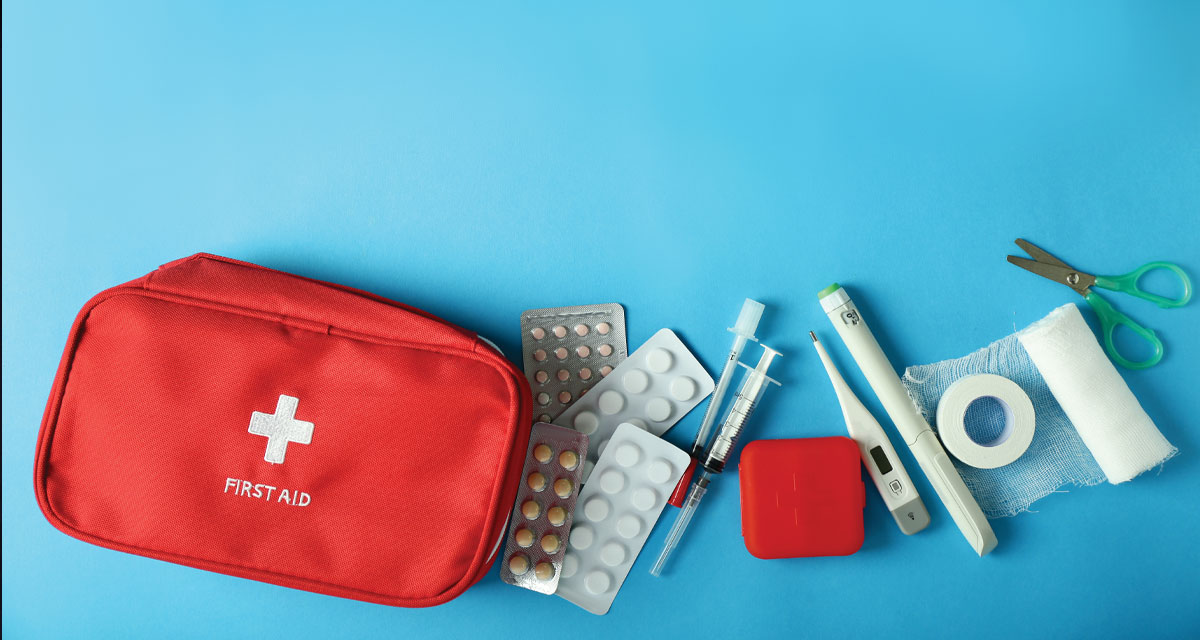“What-if?”, the worrisome words, arrive unannounced in the consciously spinning topics of our mind, from safety and financial security to loved ones and pet health. Asking, “What can I do?” leads to a proactive decision to invest time in the ultimate insurance policy—valuable life skills comprising security, shelter, food, water, and medical care! In any emergency, from extreme weather to a personal disaster, you have the power to take charge of your fate by making plans and taking action!
In 2020, many individuals arrived at the same conclusion: they weren’t prepared for store shelving to be emptied of essential items, including supplements like vitamins and first-aid supplies. We often cannot fathom an America without the plethora of options, including brands, a range of price levels, and convenience. While it’s easy to purchase a 200-item first-aid kit plus trauma supplies, the all-in-one may not include everything you need; instead, consider building your own.
Find a Suitable Bag
Kits often come in a hard case, limiting your space to add additional items; instead, consider including a child’s backpack or large toiletry bag. Many items are bulky in size and shape. You’ll need a flexible bag with pockets and zippered pouches for ease to open, reach, and apply quickly.
Tip: Always keep your supplies waterproof, in size-appropriate, or non-breakable containers.
Tip: Always check expirations dates
Tip: Organize your bag by function to ensure accessibility.
Books
Start by purchasing an illustrative first-aid manual. You’ll find ones for outdoorsmen, hikers, mountain climbers, and individuals studying to become emergency medical technicians. While you may think it may not suit your needs, the goal is to know how to use the supplies properly; therefore, find a text that describes various techniques from applying splints and dressings to using CPR and controlling bleeding through step-by-step instructions. An informative book will ensure your “doctoring” minimalizes shock or trauma until reaching a medical professional.
What is Essential?
First-aid kits usually contain small numbers of critical items, such as band-aids, gauze, sterile pads, tape, splints, disinfectant wipes, rubber gloves, ointments, and gels.
Beyond the list, you can add the following:
Liquids: 97% isopropyl alcohol, hydrogen peroxide, eye drops, iodine, saline solution, tincture of iodine, hand sanitizer, and liquid bandage
Over-the-Counter Medications: Acetaminophen (fever reducer), aspirin (treat chest pain, strokes, and prevent heart attacks), Benadryl (an antihistamine), Dramamine (motion-sickness), electrolyte tablets (dehydration), Epi-pen (allergic reactions), Ibuprofen (anti-inflammatory), Loperamide (an antidiarrheal), and Tums.
Topicals: aloe vera gel, anti-fungal cream, hydrocortisone cream, analgesic cream, and zinc oxide (sunburn).
Bandages and More: Ace wrap, butterfly wound closure strips, “Quick-Clot,” triangular bandages, and various gauze pads (one-inch to four-inch,) adhesive bandages, and band-aids. Also, consider adding surgical tape, individually packaged alcohol pads, tweezers, and shears.
Other: Keep a box of at least ten non-latex rubber gloves, irrigation syringe, small safety pins, a needle, white cotton thread, and razor blades. Consider adding a forehead thermometer, duct tape, Mylar space blanket, headlamp, and matches.
Improvised Medical Supplies
Pressure is not the only solution to stop a bleed; tampons are highly absorbent. Honey and sugar contain enzymes and will form a clot to stop bleeding. Remember, the skin takes approximately 72 hours to seal after an injury. Rather than suture the skin together, another less painful sealant is Superglue or New-Skin Liquid Bandage.
Also, try
- Duct Tape: An essential impromptu material to brace or prevent injuries, hold broken bones in place, and use as a bandage, such as, to make butterfly strips.
- Cling Wrap: Perfect for making waterproof bandages or keeping an icepack in place.
- Floss: If string isn’t available, use floss!
- Meat Tenderizer: With a few drops of water, a meat tenderizer can soothe the pain from a sting or a bite due to possessing the same enzymes found in bug venom.
- Q-tips: Great for spreading creams and lotions on wounds.
- Ziploc bags: Applicable for a makeshift trash or biohazard bag.
First-aid kits are never fully assembled; there’s always an additional item to improve it. What will you add to accommodate the members of your family, whether it’s a three-year-old or great-grandmother? The next task, of course, is to make a kit for your vehicle!
Next Month: Responding to a Medical Emergency























